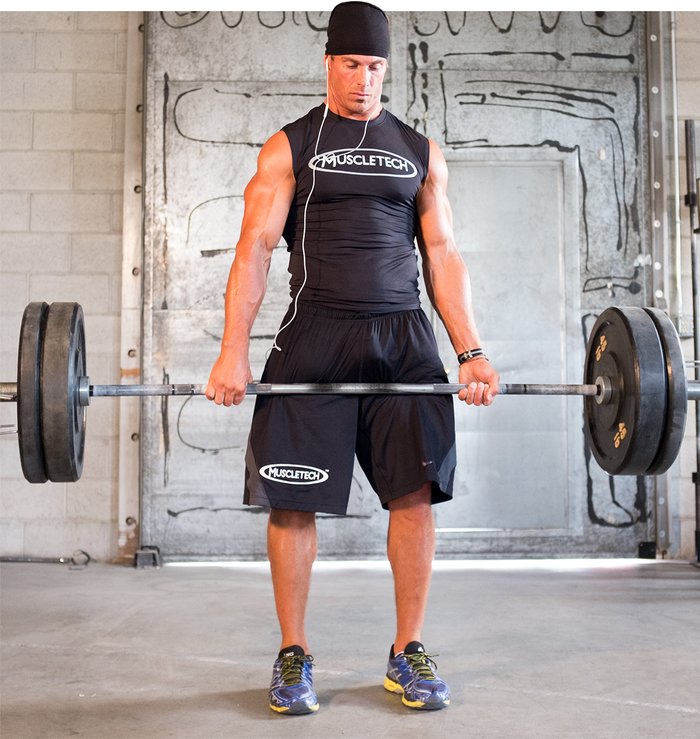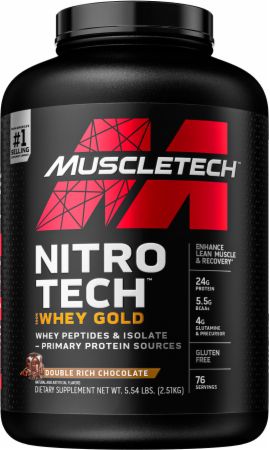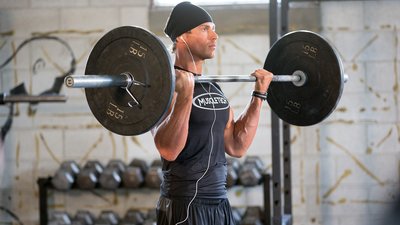There's a school of thought that says it's pretty hard to blow an offseason attempt to build mass, that it should be a slam dunk. Lift heavy and eat, well, everything in sight, and you can't help but grow, the thinking goes.
Yet gaining size offseason is anything but a slam dunk. Numerous mistakes can be made. I should know; I made many of them early in my lifting career.
Don't make the same mistakes I did. And to avoid them, you need to know what they are. With that thought in mind, here are the six biggest blunders you don't want to commit this winter as you attempt to beef up your physique.
Blunder 1: Following a Dirty Bulk
"You are what you eat" may be an old cliché, but it's an appropriate one when discussing a clean versus dirty bulk. Consume all the processed, fat-laden, sugary foods you want, including most fast-food options, and you can rest assured the gains you make won't be the kind you had in mind.
The idea of devouring every food in sight, a strategy popular among bodybuilders in past decades, meant large bodyweight swings in which indiscriminate amounts of body fat were added along with muscle. Not only can that cause health issues, but it's not particularly attractive, unless you enjoy having to turn sidewise to squeeze through a doorway.
The clean bulk has gained popularity because its followers typically look good year-round. They also don't have to undertake long-term, intense leaning-out phases after the bulks. Still, a clean bulk requires a more discerning approach to what you're eating. The emphasis becomes natural, unprocessed, whole foods that contain fiber, such as fruits and vegetables, as well as lean cuts of meat low in saturated fat.
You should also avoid sugar-sweetened products that are quickly digested and oftentimes lower in nutrients. Calorie-loaded sauces and dressings should also be avoided.
Blunder 2: Starting Your Workouts With the Wrong Exercises
If you're a regular on this site, by now we've beaten into your head the importance of doing squats, bench presses, and deadlifts first in your workouts, when your energy levels are highest and fatigue has yet to set in. Multijoint exercises should form the foundation of your training. They are exactly what their name suggests: more than a single pair of joints are working in unison. More joints in motion mean more muscle groups are activated.

For example, when you do a bench press, the elbow and shoulder joints are both engaged. The muscles that attach to them—in this case, the pecs, front delts, and triceps—are all working in unison. What's also important here is multijoint movements have been shown to better trigger the release of testosterone and growth hormone. These anabolic hormones play an important role in muscle protein synthesis and growth.
Don't think you have to avoid single-joint exercises altogether, especially considering arm, hamstring, and shoulder workouts rely almost exclusively on them. Just make sure they're not the "meat and potatoes" of your workouts. In most cases, they should be done after all your heavy multijoint work is completed.
If you're looking to build mass, you might even consider training for strength or doing an offseason powerlifting cycle. Those kinds of workouts rely on heavy, multijoint movements while also dialing intensity and volume to maximize strength building. Adding more strength can go a long way toward increasing muscle size when you're back on a scheme to build muscle. You'll be able to use heavier loads for more reps.
If you're looking for recommended programs as a place to start, here's a smartly designed, six-week muscle-building program and another geared for strength.
Blunder 3: Forgetting About Total Calories
In the past, you were told to consume an extra 500-1,000 calories a day to support gains in mass. This measurement ends up being imperfect, because it doesn't account for body weight, age, activity level, height, weight, and other factors. For a more exact measurement, here's an easy-to-use calculator to help you estimate your total daily calories. Be sure to click on Muscle Gainz to account for the extra calories to support growth.
What makes this calculator especially appealing is that it suggests a marker that won't overshoot or undershoot your daily totals (at least for most people). Your goal may be to add size, but you want those gains be more muscle than fat. To that end, your daily caloric surplus should amount to a weight gain of 0.5-1.5 pounds each week, equaling 2-6 pounds a month. Doing so any faster likely means you'll add significant amounts of body fat, so you want to set realistic expectations on how fast you should be gaining weight.
That also means learning how to count calories, at least in the short term, until you can better eyeball them. I realize this can be a time-consuming pain in the butt, one you'd rather not have to deal with. However, you wanted to know the biggest blunders, and arbitrarily eating more foods is as big as they come!

Blunder 4: Maxing out all Your Training Variables
Being hypermotivated is a great way to begin a mass phase...until it's not so great. It's easy to think maxing out all the training variables will get you to your goal faster.

Yet all too often, that's a counterproductive idea, especially if any of these apply to you:
- You do more exercises in your body-part workouts, thinking more is better.
- You take every set to muscle failure.
- You train more days, to ensure you're not missing an opportunity for growth.
- You combine elements of strength training with high-volume bodybuilding, thinking you'll get the best of both worlds.
Looking back, it's hard not to say many of us pushed the overtraining envelope a little—or a lot. In my day, I'd never heard of concepts like active rest, deloading weeks, or cycling workouts, and looking for them on a search engine like Google wasn't an option.
Temper your enthusiasm by smartly manipulating growth variables rather than stepping on the gas pedal for all of them at once. Getting the hang of it is part art and part science, but it pays to keep learning and trying out new ideas on yourself. You be the judge of what works!
Blunder 5: Failing to Keep Track
Even if you're supplementing with ginkgo biloba, I doubt you remember everything you did on your last shoulder day, including weights, sets, and reps. Or whether you were trending toward a plateau or solidly progressing from one month to the next.
Winging it may have worked in the past—and for beginners, just about anything works, at least for a while. But as you progress, gains become increasingly more difficult to achieve. When you're faithfully avoiding the blunders listed above, the anabolic "on" switch should be primed for an uptick in muscle protein synthesis, so expect to see progress.
How do you know for sure? The easiest way to see those gains is to record them, noting incremental increases in strength or other adjustments you've made in your training. If you're carefully noting your exercises, loads, and volume, you more precisely measure your exercise performance and make the necessary adjustments as needed.
Seeing gains over time is witness that your body is adapting to the overload. That's an incredibly important concept, relating to progressive overload. As you gain strength and size over time, you must continue to challenge yourself in the gym. Once you can do 225 pounds on the bench press for 10 reps, don't get comfortable. Instead, shoot for 12 reps, or increase the load by 5 percent. Those are the kinds of decisions best made by logging your workouts and making planned increases so you don't slip into a comfort zone—or equally bad, have no idea what you should be doing next.
But logging your workouts isn't the only place you'll want to measure your success. Another is the bathroom scale. As mentioned earlier, keeping track of your weight gains—which should be 2-6 pounds a month to ensure they are mostly gains in muscle—is the best method of ensuring you're not gaining weight too fast or too slow.
Either way, adjusting your daily total calories and macros would be called for, but you'll want to have it recorded to know for sure.

Blunder 6: Failing to Account for Recovery
You've been told to train hard, but not too hard. To eat more, but not too much. In that sense, success is something of a balancing act. One more pillar in your quest to gain muscle is to remember that the process also requires time, smart pre- and post-workout nutrition, and other recovery factors.
Your gym efforts are the stimulus necessary to begin the muscle-building process. But it doesn't end there. Consider what you eat and how well it supports that stimulus in not only building muscle via today's workout, but also in storing nutrients for tomorrow's session.
The concept of recovery is pretty broad, because it includes elements in addition to nutrition and post-workouts meals, like the role of supplements, warming up and cooling down, sleep, days off, the use of foam rollers and massage, and the degree of your physical efforts outside the gym.
What's more, you're likely going to have to deal with greater degrees of delayed-onset muscle soreness, one of the most obvious signs you had a challenging workout. Clearly, it's difficult to begin your next training session if you're still really sore from the last one. Besides, lingering soreness can affect your quality of life.
Broadly speaking, if you're pushing your body hard in your workouts, you'll also want to optimize your recovery process. In that sense, everything you do and eat outside the gym is also important in your offseason mass-gaining plan!

